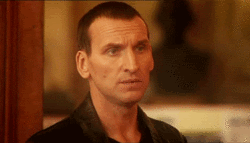For me, it honestly doesn't matter in the end. People obviously can, and always have and always will ignore the parts they don't like.
The thing I find really bizarre, though, is how many of the people who want LDS to be not *really* real can seriously and with a straight face say stuff like 'Ok, maybe some version of it actually happened in the Trek universe, but it's *obviously* way too over the top/ridiculous to possibly have happened exactly as shown.' Not because there's anything wrong with that statement but because it always comes with an inherent implication that this somehow makes Lower Decks different from all the other series. It really doesn't.
None of the shows can actually have happened exactly 100% as shown without inventing a whole hell of lot of hand-waves and deus ex machina justifications for all the blatant contradictions and bizarre absurdities. This is literally built into the basic concept of what the Star Trek canon is in the first place. And at the moment, realistically, Lower Decks is really a far lesser offender than most of the other shows, if only because it's just 10 episodes in so far.
The thing I find really bizarre, though, is how many of the people who want LDS to be not *really* real can seriously and with a straight face say stuff like 'Ok, maybe some version of it actually happened in the Trek universe, but it's *obviously* way too over the top/ridiculous to possibly have happened exactly as shown.' Not because there's anything wrong with that statement but because it always comes with an inherent implication that this somehow makes Lower Decks different from all the other series. It really doesn't.
None of the shows can actually have happened exactly 100% as shown without inventing a whole hell of lot of hand-waves and deus ex machina justifications for all the blatant contradictions and bizarre absurdities. This is literally built into the basic concept of what the Star Trek canon is in the first place. And at the moment, realistically, Lower Decks is really a far lesser offender than most of the other shows, if only because it's just 10 episodes in so far.

